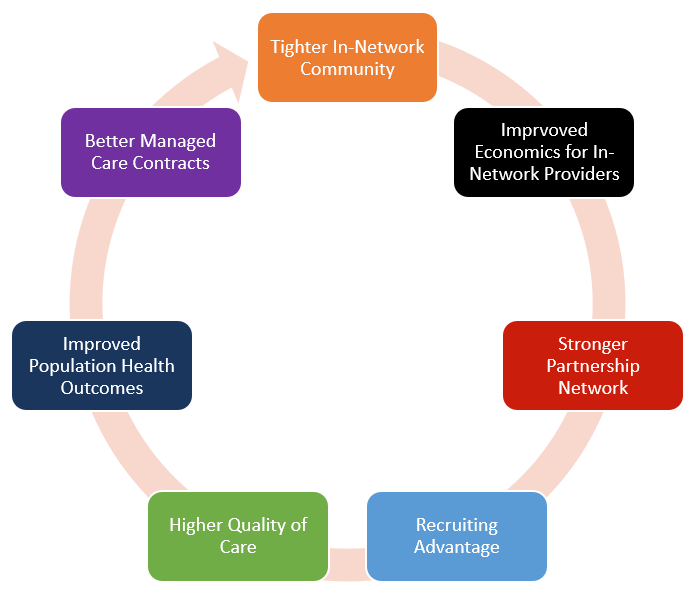Domestic utilization is how a health system’s employees (and their dependents) utilize domestic providers within this system. One of the most important factors for a hospital’s success is figuring out how to drive domestic utilization to your own health system.
When done correctly, increasing domestic utilization reduce income leakage to non-domestic providers, lower high-cost utilization, and improve preventative services. Consequently, by analyzing your domestic usage your health system can create a long-term strategy to drive the future success and create sustained revenue.
The Benefits of Domestic Utilization
As you improve your domestic use, the benefits of this improvement will build upon each other. Here are the seven major benefits of domestic utilization:

1. Closer Network
The first benefit is straightforward. When your employees (and their dependents) use your health system, it builds your network’s community.
2. Improved In-Network Economics
Again, this benefit makes clear sense. The more domestic utilization your health systems has, the more in-network providers benefit, financially.
3. Stronger Network
Boosting the use of in-network facilities can help improve communication and transitions of care for all patients. This improvement should lift all in-network partners. Furthermore, the more value you create for our patients, and other partners, the stronger your partner network becomes.
4. Recruiting Advantage
Better domestic utilization makes your network both stronger internally and more attractive externally. So, potential new network members will find a high rate of domestic utilization very engaging.
5. Higher Quality of Care
Keeping your employees within your network can help close gaps in patient care through improved coordination and a shared standard of care.
6. Improved Health Outcomes
One of the biggest benefits of improved domestic utilization is better population health outcomes. When your staff stays within your health system, you can more easily manage and track their healthcare outcomes.

7. Better Managed Care Contracts
Achieving a higher quality of care and strengthening your network can lead to bigger and better-managed care contracts for everyone in your health system.
Your Current Domestic Use
Before you begin to improve your domestic utilization, you must first assess where your health system currently stands. There are four major questions every hospital system should ask itself to properly analyze your domestic use. These questions are:
- Do our employees go outside our network because they don’t have easy access to nearby in-network facilities?
- What gaps in our care drive employees to use non-domestic providers?
- Which specific non-domestic providers are associates going to and for what services?
- Do employees use other providers because they deliver higher quality outcomes than our providers?
Each of these questions will help you assess your current domestic utilization. They give your company reasons your domestic use could be lagging behind where you want it to be. But once you understand your current domestic use, you can begin to build upon and improve this utilization.
How Do You Boost Your Domestic Utilization?
One of the first steps towards improving your domestic utilization is instituting a flexible plan design. Using a three or four-tiered plan can help drive domestic users to your health system. Additionally, pharmacy pricing initiatives can be put in place to drive utilization to your domestic pharmacy.

Combining these benefit plan strategies with a medical management team can truly unlock cost savings while improving domestic use. A medical management provider works with your health system to encourage employees to use your facilities.
The Olson Group works with many different third-party administrators who run medical management programs. One such provider has a program specifically designed to drive domestic utilization.
This program focuses on both your patients (employees) and the benefits plan itself. On the patient side of the program:
- Takes a patient-centric approach, and assess a patient’s level of medical knowledge
- Helps individuals navigate their plan and fills their plan/financial knowledge gaps
- Updates remind and refresh patients on the latest evidence-based medicine
On the plan side of the program:
- Works to keep health services in-house
- Consults with you to build a strategic, solutions-focused, plan design
- Uses predictive risk modeling to create a cost & risk mitigation strategy
Ask yourself, what’s your current TPA or benefits carrier doing to drive care back to your facility? If you don’t have an answer, it’s because they’re likely not doing anything.
Contact one of our employee benefits experts to find out all the advantages driving domestic utilization can bring your health system.

